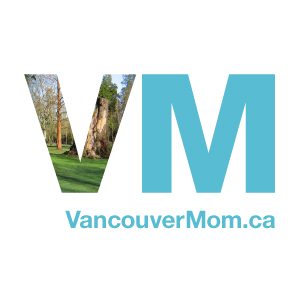In wake of increased anti-Asian hate crimes, the City of Vancouver has proclaimed May 29 to be a Day of Action Against Racism to “reinforce that racism will not be tolerated in the City.”
Locally, there has been a rise in hate crimes against of people of Chinese descent (both physical and verbal assaults). In the US, a black man who was bird watching was verbally attacked by a white woman in Central Park, a black runner was stalked and killed by two white man, and another was killed by a policeman in full view of bystanders. All of these crimes were captured on video and shared to social media causing widespread outrage.

While we all want to believe we live in a post-racist, multicultural fusion utopia, it’s plain to see that racism is alive and well. So how do we talk to our kids about race and racism without scaring them or getting overly complex?
How to talk about racism with your kids and be an ally for people of colour
Have a conversation with your kids

Here are some things parents can say: “There are people in the world who hate other people. Some people don’t like others who look or act differently from them based on skin colour, dress or accents.”
Familiarize your children with the symbols of hatred so they can be aware and stay safe: The Nazi flag, the swastika**, the KKK hood. (Please read note below)
Introduce your kids to things that racists feel threatened by: hijabs, men holding hands, people with brown skin, men with turbans or women in saris or head dresses.
Emphasize that difference and diversity is what makes Canada strong and vibrant and wonderful. It’s who we are and no one can take that from us.
Bring diversity into your family life

Take a look at your coffee shop, dinner table, your neighbourhood, your school, your playground, your children’s friends. Look at your Facebook feed: Do you see faces of colour, immigrant voices, people with differing viewpoints? Do you talk to people who are different from you at your child’s school. Do you interact with your neighbours? Do you welcome and embrace people who are different from you? Is difference a part of your norm? Obviously, if the answers are no, it’s time to take those small steps to broaden your social circles.
What kids can do

All kids especially white children need to be allies for kids of colour. If they hear mean things (or racial slurs) spoken, they need to stand up and support those kids, whether it’s on the playground, at school and on the street. The bullied child may be shaken, so white children need to step in to help not stand idly by.
Here are some things an ally can say to help:
- I’m so sorry that happened to you. How can I help you?
- Let’s go find an adult.
- Let’s leave now.
- Do you want me to simply listen or do you also want advice?
- Thank you for trusting me.
- You are not alone.
Stand up to racism at all times
If you are not a person of colour, it’s easy to stay silent or let things slide, but you must be vigilant and speak up to family and friends, attend rallies, cultural festivals and parades, reach out to your neighbours, and keep Vancouver a place where everyone feels safe and everyone belongs.
** A note regarding the Swastika
“Since World War II, the swastika was a symbol of hate, the swastika – or ‘svati’ had been revered for nearly eternity amongst Hindus. We still use this symbol in religious ceremonies and display it in our homes. It means ‘wellbeing’ in the ancient Sanskrit language. If you or your families do see this symbol please understand, that to many Hindus and Jains, it is a symbol of well-being.” ~ Mital Gorman, mom and event producer for Diwali in Kits >> Read more
Do you have tips, strategies, viewpoints or experience? Please email [email protected]
Thanks to Catharine Marshall and tolerance.org for providing me with many of these strategies and tips.
Resources
The Conscious Kid – an education, research and policy organization dedicated to reducing bias and promoting positive identity development in youth.
⠀⠀⠀⠀⠀⠀⠀⠀⠀
Where Change Started – tools for personal development and skill-building founded by L. Glenise Pike @elleglenisepike. Her space is both inspiring and a safe place to ask questions and to begin educating yourself.
Harriet Fancott is the Editor and Social Media Manager for Vancouver Mom. She has over 20 years experience in the arts, tech and mom-based blogging arenas. She lives in East Vancouver with her husband and son where they enjoy exploring all that Vancouver has to offer from festivals and events to playgrounds and beaches to sushi and ice cream (although not together).




















This comment is probably long overdue and I hope the readers of this article note that although since World War II, the swastika was a symbol of hate, the swastika – or ‘svati’ had been revered for nearly eternity amongst Hindus. We still use this symbol in religious ceremonies and display it in our homes. It means ‘wellbeing’ in the ancient Sanskrit language. If you or your families do see this symbol please understand, that to many Hindus and Jains, it is a symbol of well-being